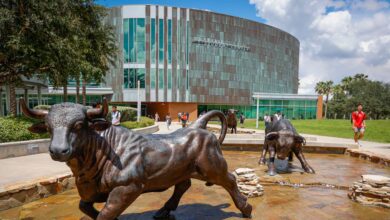New Era: Rays Ownership Transition
In late September 2025, the Tampa Bay Rays were officially sold to a group led by Florida real estate developer Patrick Zalupski. The purchase price is reported at about $1.7 billion. Under the new leadership:
- Zalupski assumes the role of MLB control person and co-chair.
- Bill Cosgrove is co-chair, and Ken Babby is appointed CEO to oversee day-to-day operations.
- The previous owner, Stuart Sternberg, retains a minority (~10%) stake.
- Meanwhile, the existing front office structure (e.g. President of Baseball Operations Erik Neander) is expected to remain intact for now.
This marks a shift in control from an owner whose approach had long been characterized by caution (especially around stadium deals) to one whose background is grounded in real estate development.

Stadium & Location Decisions: Defining the Real Estate Impact
One of the central challenges for the Rays historically — and perhaps the defining task for this new ownership — is securing a long-term home. That decision will heavily shape real estate patterns in the surrounding areas.
Tropicana Field & the Gas Plant / “Historic Gas Plant” site
- The Rays’ current lease with St. Petersburg extends through the end of 2028.
- In 2024, Hurricane Milton severely damaged Tropicana Field’s roof, prompting St. Petersburg to commit ~$22.5 million to a replacement.
- Prior to the ownership change, there was a plan for a $1.3 billion stadium + mixed-use development in the “Historic Gas Plant District” (adjacent to Tropicana Field).
- However, in March 2025, the Rays under Sternberg officially withdrew from the Gas Plant / stadium project.
Real Estate & Development Trends to Watch
Here are some of the key real estate and market-level impacts likely to flow from this transition.
1. Land Value Uplift & Speculation
- Parcels in Tampa’s Ybor, Channel District, and adjacent neighborhoods could see increased speculative interest if stadium plans firm up. Developers and investors will begin jockeying for sites suited to mixed-use, entertainment, or hospitality.
- In St. Petersburg, land around the Trop / Gas Plant may either grow in value (if redevelopment remains anchored there) or experience a downturn if the Rays depart, particularly for sites reliant on stadium adjacency.
2. Mixed-Use & Transit-Oriented Development (TOD)
- Modern stadium projects are rarely stand-alone. They tend to be embedded in entertainment districts, with retail, office, hotels, residential, and public spaces. Large-scale plans proposed for the Trop / Gas Plant site already include innovation labs, research hubs, parks, open space, and cultural programs.
- Around a new stadium site in Tampa, we can expect proposals for vertical mixed-use buildings, pedestrianized streets, public plazas, and amenities to support visitors beyond just game days.
3. Infrastructure & Connectivity Investment
- For a stadium to succeed, accessibility is key: roads, transit, parking, walkability, last-mile connectivity. If Tampa becomes the focal point, we’re likely to see targeted infrastructure upgrades (roads, transit links, parking garages) in the chosen zone.
- In St. Petersburg, if development continues around Trop, there may also be upgrades to public realm, mobility, and utilities to support denser uses.
Timing & Uncertainties
It’s worth noting several key caveats and timing factors:
- The Rays commitment to a new stadium remains in early stages. The new ownership is prioritizing the stadium decision among its first moves.
- Political, regulatory, and public financing hurdles are complex. Stadiums and large mixed-use developments generally require coordination with city and county governments, tax incentives, infrastructure commitments, and community buy-in.
- The redevelopment of the Gas Plant / Trop site is still active in conversation but not guaranteed — even proposals now are keeping flexibility for whether the Rays remain.
- Market conditions (construction costs, interest rates, capital availability) will influence which projects actually break ground and how ambitious they can be.
Conclusion: What to Expect in Local Real Estate
The change in Rays ownership ushers in a period of real option for regional real estate. The direction the owners choose — staying in St. Petersburg with redevelopment, relocating to Tampa, or splitting their presence — will shape growth corridors, valuations, and development priorities across the Tampa Bay area.



